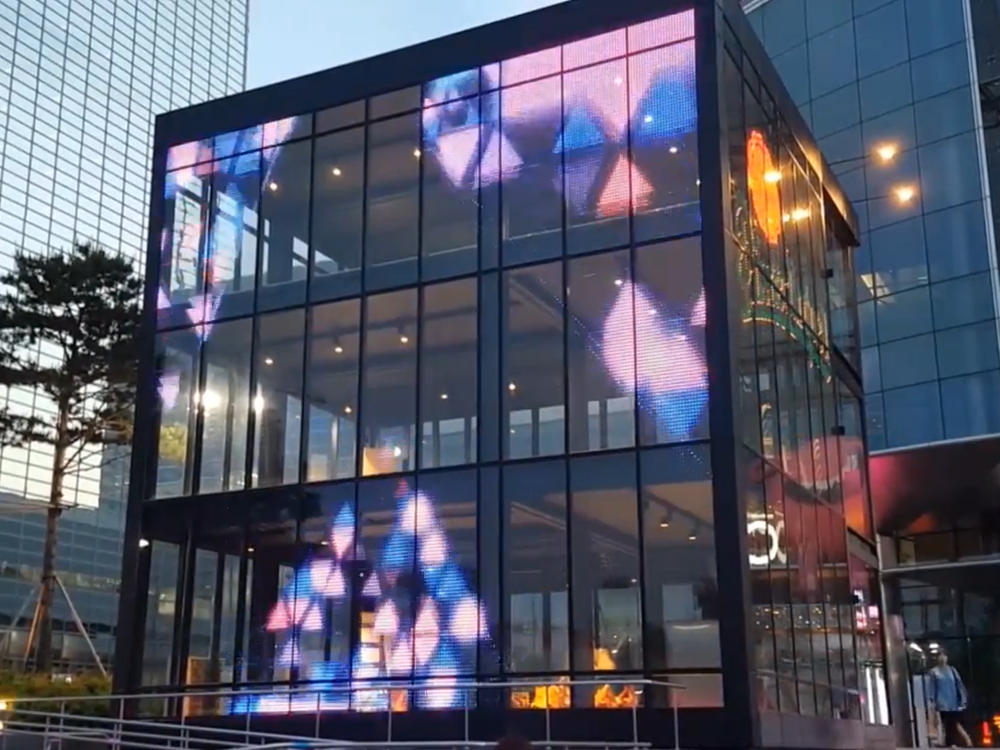Flexible LED Display Buying Guide
Flexible LED displays are revolutionizing the way we present content in modern spaces. With the ability to conform to various shapes while delivering stunning visuals and energy efficiency, they have become an ideal solution for a wide range of applications.
What Is a Flexible LED Display?
A flexible LED display is an advanced visual system composed of LEDs arranged on a flexible substrate. Unlike traditional rigid screens, these displays can easily bend or roll to accommodate tight spaces or curved installations. They are thin, energy-efficient, and capable of delivering sharp images and vivid colors.
Their most distinctive feature is flexibility. These displays can transform environments—retail stores use them to create dynamic atmospheres, events employ them for vibrant visuals, and architectural designs seamlessly integrate them into curves.
For example, rollable screens are perfect for compact spaces, while bendable models complement most columns or curved structures. Thanks to their versatility and advanced technology, they are gaining popularity in advertising, entertainment, and beyond.
Key Features to Consider When Buying a Flexible LED Display
Understanding the key features of a flexible LED display ensures you get the best performance and return on investment:
-
Resolution: Defines image clarity. Displays with smaller pixel pitches (e.g., 1.5mm) are ideal for indoor use, offering high resolution similar to short-throw projectors.
-
Brightness: Crucial for outdoor visibility. Indoor screens should offer at least 100 nits, while outdoor events may require 4000 nits or more.
-
Flexibility: Check the screen’s bend radius to assess its adaptability. A smaller radius allows for more complex curves.
-
Durability: Look for polyimide-based PCBs and screen coatings to prevent aging, moisture damage, and temperature shifts.
-
Power Consumption: Some models are more energy-efficient than others. A good flexible LED display balances low power use with high brightness.
-
Ease of Integration: Ensure the screen integrates well with your existing infrastructure, such as content management software or physical setups.
Types of Flexible LED Displays
LED displays come in several models to meet different application and installation needs. Knowing these types helps you choose the right one, whether it’s for creative point-of-sale displays or large-scale outdoor events.
-
Rollable LED Displays: As the name suggests, these can be rolled up like paper. They’re highly portable and compact—perfect for temporary structures, trade shows, or spaces with limited storage. For instance, LG recently introduced a rollable OLED TV showcasing this design innovation.
-
Bendable LED Displays: These displays flex to fit round surfaces such as columns on building facades or dome ceilings. With bend radii between 10mm and 30mm (depending on the model), they’re ideal for museums or exhibitions—particularly for animated ads where product aesthetics are key.
-
Stretchable LED Displays: Still an emerging concept, these displays boast up to 120% flexibility and protection for internal connections, making them suitable for stretchable applications. Though in the R&D phase, they show promise for wearable computing, smart textiles, and non-flat display surfaces.
-
Transparent Flexible LED Displays: Highly flexible yet crystal-clear, these are perfect for retail window advertising or architectural glass installations. Offering up to 80% transparency, they pave the way for eye-catching yet fully see-through digital signage solutions.
Applications of Flexible LED Displays
Portable and stylish, flexible LED displays are reshaping various industries by enabling innovative and functional design possibilities.
Advertising and Retail
Flexible LED displays are becoming a hallmark of innovation and practicality in modern retail environments. Retailers use them for dynamic promotions, product showcases, and enhancing brand storytelling.
For example, these displays can be cleverly integrated into store layouts to create captivating visuals without obstructing merchandise visibility. This balance between form and function delivers a valuable customer experience while preserving space.
Digital Signage
Transparent flexible LED screens are in high demand for lobbies, airports, shopping malls, and transit networks. Their adaptability to specific architectural layouts makes them ideal for high-traffic areas.
Whether used for ads, announcements, or public messaging, these foldable screens deliver vibrant images that blend seamlessly with the surroundings—maximizing visibility without interrupting design flow.
Events and Entertainment
The entertainment industry thrives on impressive screen trends—and flexible LEDs are a perfect match. From dazzling stage setups at concerts and festivals to ambient graphics for live events, these ultra-thin screens provide breathtaking, memorable visuals. They allow event organizers to tailor displays to unique venues, captivating audience attention and curiosity.
Wearable Tech
LED Display screens are also shaping the future of wearable electronics. While still in their early stages, they’re being integrated into smart clothing, jewelry, and athletic gear. Imagine a jacket with glowing patterns or a fitness band displaying info via LED matrix—this innovation offers new levels of flexibility in design and functionality for wearables.
Factors That Affect the Price of Flexible LED Displays
When ordering a system, it’s crucial to consider flexible pricing strategies tailored to the unique nature of flexible LED displays. Several factors influence the overall cost:
-
Screen Size: Larger displays for outdoor advertising or major events naturally cost more. Size also affects resolution and brightness requirements, as bigger screens need higher specs to maintain visual clarity.
-
Resolution: A key parameter directly tied to image quality. High-resolution displays (HD or UHD) demand more powerful processing, finer manufacturing, and result in higher costs.
-
Features and Customization: Like all signage or lighting products, programmable flexible LED displays offer various customization options. The inherent flexibility of the screen and the ability to tailor its form can significantly impact final pricing.
Conclusion
Flexible LED displays are gaining momentum across industries due to their expanding capabilities and design freedom. Whether used in retail, entertainment, or integrated into unique architectural structures, these displays are redefining the possibilities of digital communication.
Post time: Jul-03-2025


